A good indicator of how well an ultra-race has gone for me is how quickly I can recover. I didn’t run Sunday or Monday but I did cycle to work yesterday and today. My legs are feeling better by the day so I went out for an easy run after work.
Katrina continues to build up to the London Marathon so we went out for an easy run together. We had a good chat as we ran round one of our regular loops.
Thank you to everyone who has left a comment about the Hardmoors 55 race. The thing that most people have commented on or asked about is my running to a certain heart rate.
So I thought it might be helpful to answer some of the questions here so others can contribute as well. Firstly let me say that I’m not an expert. I did some physiology at College when I trained as a PE teacher but that was 35 years ago! I’m coming more from a ‘what seems to be working for me’ position. I don’t expect anyone to think this is the only way to run.
In fact Dave and I had a good chat after the Hardmoors race about this and Dave made the point that we both improved from last year but had very different tactics. Dave was very much racing especially when he was in 3rd place with the 4th placed runner only a couple of minutes behind him with 10miles to go. He was only focused on keeping that podium position. Time wasn’t a factor though obviously by running faster to stay ahead he ended up running a pb!
So here are my thoughts on a few questions that people have asked on Facebook or email. If this is not your thing then click away now. I know that this is only one way of running ultras.
There are many successful ways to approach to running long distances. If you have read my friend Stuart Mill’s blog you will know that this is polar opposite to his ‘run as fast as you can for as long as you can’ strategy!
Question 1: How do you work out the best hr to run a race at? What % of max HR are the thresholds?
I suppose the key to getting the best performance is knowing what HR to aim for. I’m 56 so my maximum HR is roughly 220-56 = 164 (+or-10). I did a max VO2 test 6 years ago and my maximum was 172. They reckon it drops by 1 beat per year but I’m working on 170 for now. So 137 is 80% of my maximum which seems high so maybe my maximum is higher than 170??
So here are my zones from the Hardmoors 55 (thanks to Strava!) …
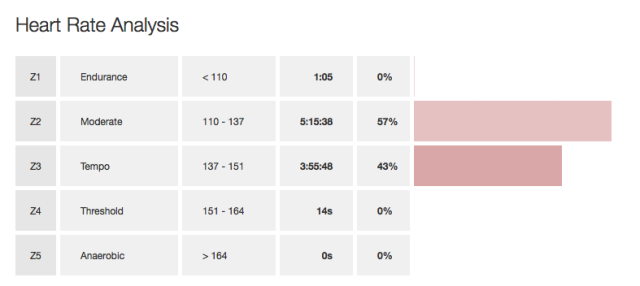 I didn’t just come up with 137. In fact it was nothing to do with me! My friend Robert Osfield sent me a spread sheet with target heart rates for races ranging from 3hrs to 48hrs. He based these on a variety of races I had already done that I had the HR for.
I didn’t just come up with 137. In fact it was nothing to do with me! My friend Robert Osfield sent me a spread sheet with target heart rates for races ranging from 3hrs to 48hrs. He based these on a variety of races I had already done that I had the HR for.
Maybe I should ask Robert to do a guest post and he can explain how he came up with these figures? Here is a copy of the list for me and for Robert up to 23hrs ….
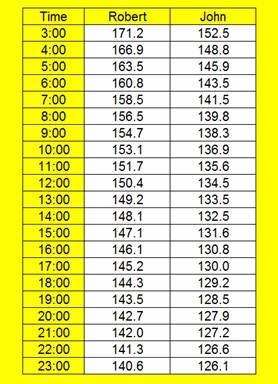 Robert is younger than I am so his maximum HR will be higher.
Robert is younger than I am so his maximum HR will be higher.
Last year for the Hardmoors 110 Robert suggested a HR of 124 for a race lasting 28hrs which was my target so I trusted him and went with it. I wasn’t quite so disciplined at this last race but I did keep an eye on my HR especially over the first 5-6 hrs of the race. Sadly my Suunto didn’t save the data so I couldn’t review how I got on.
I finished strongly in that race which gave me the confidence to try it again for the Hardmoors 60 aiming for 135. In that race in September I was good for the first 10 miles to Salturn but then let my enthusiasm run away with me and for the next 12miles my average was 142 which I paid for during the final 10miles. Robert pointed out that by going over my target by a few beats per minute meant that I was going into debt which I would pay for.
For this race I kept that in mind and made sure I didn’t let my HR go over 142. It was quite hard at times especially when you are running with others and know you could easily keep running up the hill and stay with them.
I had to continually remind myself that this is a bigger picture strategy and if it works I’ll catch those who are ahead! But in the end it was all about my race and trying a different strategy than the one I normally use.
So if anyone is wanting to try this they will need to work out the HR to aim for based on the race length, their age and fitness. I would be interested to hear how others work out their target HR?
Question 2: One thing I’m interested to find out is whether by running as you did by heart rate you think you ‘raced’ the Hardmoors?
You may say that by running by heart rate you didn’t have your ‘race hat’ on which meant there were times when you didn’t push it - perhaps to catch someone up or overtake someone - but that you still achieved your objective which was to finish in a good time and run strong.
I definitely did not feel I was racing the Hardmoors 55. In fact there were times when I was deliberately holding myself back even after 30 or 40 miles. I felt in good shape and could easily have been 10-15mins faster to the half-way point.
But I definitely did achieve my objective of having a great day, running a time which far exceeded my expectations finishing strongly with a smile on my face. Shirley is going to send me the splits which I’m looking forward to sorting out as I’m interested to see how I compared to the rest of the field especially in my split from Osmotherley to Helmsley. A couple of runners went past me but I caught a good number.
I suppose the question is could I have gone faster by ‘racing’ like Dave did? I do think there is a difference between those at the sharp end of the race where tactics come into it and the rest of us who are really competing against the clock and the course. I don’t know where I finished and it doesn’t really bother me because it all depends on who turns up on the day and how many are running. For me I would rather run 9:35:40 and come 100th than 10:35:40 and come 10th but that must be different at the top of the race.
Again I would be interested to hear from those who are at the sharp end. What motivates you: time or position?
Question 3: Should we all be running our races by heart rate?!?
Definitely not! That would be so boring if we were all the same!! I love the fact that there are ultra-runners who run without a watch, have no idea of splits or times, listen to their body and run accordingly. I accept that I’m at one extreme with my splits and planning but that suits who I am and for me is part of the fun. I love all the build-up and working out my splits and strategy. I find it really funny when people enter a race a few days before as I see the race as the cherry on the cake with the cake the training and build up!
I would never say to others that they should run like I do. But from the comments I’ve had over the past few days there are other runners who are thinking about it and I look forward to hearing how it works out for them. If anyone feels I can help them please ask!

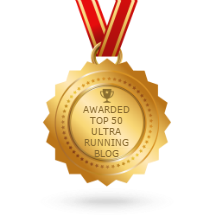

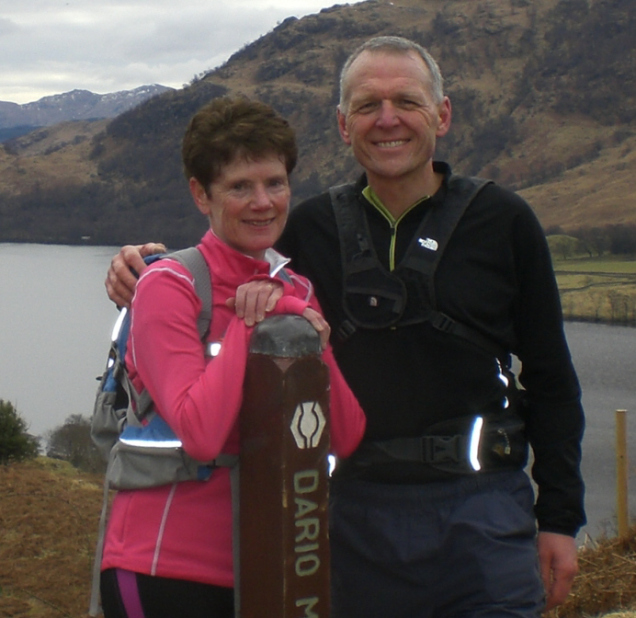
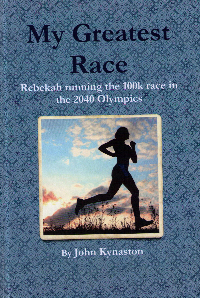

Really find your blogs informative and useful. Many thanks. Barry.
John, as you are 16 years older than myself, I am in awe of your performance, I sincerely hope when I am your age I am still performing ! You raise a very interesting point, Saturday was my 3rd ultra, having run the MCN UB40 twice. My UB40 runs were based around an unfounded mantra of 150bpm and no more(no idea why it just seemed sensible). Looking at the profile of HM55 I knew the run pace/finish time would be decided by the 50km point when most of the climb had been done. I therefor ran by feel rather than concerning myself with HR, my legs felt good and I let them go, passing many people on the shallower climbs by continuing to run, and striding out hard when I did walk uphill. My target was a 12hr finish, so a m/km average of about 8m/km and I knew that roughly 7m20s would result in 11 hrs and 6m40s 10 hrs. At 30km running by ‘feel’ I was ave 6m23s and by 50km 6m53s. However! My ave HR was 160 bpm (89% of my 220-40=180) and boy did I pay for it in the following 40km! With a final ave pace of 7m35s I had spent too much energy early in the race that my body simply couldn’t keep up with.
The body can absorb 240 kcal/Hr roughly so you are never going to keep topped up in an ultra, what you need to be cognisant of is burning your reserves slow enough whilst consuming high GI carb calories to reduce the slope angle to ‘rock bottom’. I don’t know what %HR that is and I am very interested! I felt okay at the end of UB40 70km/2500m/9h34m/8m17s ave/147bpmave which is 82% of max HR and felt v.tired on HM55 85km/2700m/10h54m/7m35s ave/148bpmave. Although my ave bpm was similar thie fact I was working too hard in the first half of the race meant my flagging second half gave the same ave.
in June I tackle the mighty SDW100 and will be definitely reining my HR to around the 80% mark from the start to ensure I don’t burn too hot too early.
Point of order Mr K - 220-56 is 164, not 184…
Ah well spotted!! I was still working on 170 maximum anyway!!
Another great article John.
The Strava HR zones charts shows how daft these “zones” can be when applying them to ultra races. From your description of your race it sounds like you spent very little time any where near lactate threashold, staying aerobic pretty well all the way - basically in the “Endurance zone” but the strava chart suggests you spent practically no time there. It pretty well proves that these charts are useless for Ultra analysis.
The max HR formula of 220-age is pretty useless as well. The only way to work out max HR is to go an testing in an a physical session. A progressive hill run is a good way of finding roughly where your max might be.
However, your max isn’t particularily important to performance anyway. Far more relevant is your HR at lactate threshold as this gives us the point when you are transitionally away from aerobic to anearobic. Setting your race heart rates as a % of the LT HR is probably the best way.
For the table that I prepared that list average race HR to time of race, listed above in the article, I derived this table my fitting a exponentional curve to actual race data from John and myself. I used the equation for the fitted curve to then estimate the average HR for a range of race times. It not only allows one to have an educated guess at average HR to races between the ones we had data for, but also extrapolate beyond where we had data. In both our cases we didn’t have any race data for 24+ so it was a useful guide.
These curves won’t be set in stone though. If your fitness changes significantly between years then the target HR might change. For my case, over the last year I’ve changed my approach to training and now train every day and have seen big changes in my HR for a given pace (around 10bpm lower for a given pace than last year.) My LT is a bit lower, but not by 10bpm, my guess is that my target HR will likely be reduced by around the same amount as my LT HR. Before my next big race - the Fling I’ll do some tempo runs to explore where my LT might now be. My resting HR is probably lower too, which again might shift the curve a bit.
Another factor in play, is that if I’m fitter then I’ll be finishing the races quicker. The quicker you finish the higher the average HR you’ll likely be able to manage. I saw this with my 2012 Fling race where I finished in 10:46 with an average HR of 152, while in 2014 finished in 9:43 with an average HR of 154. If you look at the table then this difference fits quite well.
I’m hoping for a sub 9hr Fling this year, and if I can pull it off the chart suggests that I could do it with an average HR of around 155, but as my HR/pace is so different now. With my training logs I have estimators for how my training runs would extrapolate to race finishing times, based on the last month of training these suggests that an average HR of 148 would be enough for me to do a 9hr Fling. Does this mean I’ve got some leeway? If LT HR and race HR has dropped more than this though 9hr’s could still be out of reach.
The only way to find out is to RACE 🙂
—
In terms of racing vs pacing by HR. If you finish with your fastest possible time then you’ll likely be as far up the field as you can possibly be. The only difference would be whether your pacing alters the attitude to racing of others around you. A tactically burst of speed can break a competitors will to lay chase. Also passing someone in a positive fashion rather than inching past them can also break the will to attempt racing to the line. A failed move where you exhaust yourself and are only pass by a small margin and then not keep pulling away could be fatal though, your competitor could see that race is still within reach and they could dig deep and re-pass you.
One way to use HR pacing tactically is to use it for the first half to three quarters of the race to get you most of the way to finish in the best possible shape and still running strongly. For many competitors the face you don’t slow down but they do will mean your relative speed of passing is actually really positive even though you might not have alterated your speed since the start. Passing someone when you are looking really fresh, happy and comitted could be enough for them to not consider trying to up their pace to keep up.
For those that are still running competitively in the last quarter of the race, tactics of changing pace could still be utilized even when pacing by HR. If you feel you need to build some distance between you and someone chasing you then rather than thinking just for a short distance ahead, think in terms of the next 10 minutes of race you’ll up your tempo a little just to put them under pressure. For this spell you could raise your target HR range to up your pace, but stick with trying to stay within this range, so you are still running as efficiently as you can on the ups, flats and downs. It might be the they’ll try and stick with your pace on the ascents but then struggle on the flats and descents if you keep the pressure on. Once you’lve lost the chaser you could then let the HR range drop back to a safer region so you don’t do too much damage to your prospects of keep a good steady pace up.
Another thing you can do is listen to your body, if you are feeling fresh in the last half of race and feel that it’s safe to push on harder moving the target HR range higher. Upping it by just a few bpm for a while would be one way of just testing the waters. Listen to your body, if it’s happy then stick with the higher range, if you are struggling then dial things back.
Hi John, Firstly well done on a good run at the Hardmoors 55 last weekend, which setting a PB by nearly 35 minutes, quicker than your 2014 time, clearly demonstrates that you ran well. However, I’m sure you won’t be upset by my following comments as I know you that through your running and your analysis one of your aims is to gain a greater understanding of ultra trail running and performance and hence always keen to continue to learn.
Now, I know you made the clear statement in your post above “I would never say to others that they should run like I do ” and this is my approach as well. I have my opposite approach “Run as fast as you can, while you can”. But I don’t tell runners to adopt this approach. I simply put my thoughts, and my experiences ‘out there’ to help make runners aware that there are different approaches. The difficult thing is trying to interpret which approach is best. Or in fact is there a best?
So, let’s get to my point, which you asked within your post, but then didn’t answer: “I suppose the question is could I have gone faster by ‘racing’ like Dave did?” Now, although you didn’t answer this question, from some of your comments there is some indication that YES you could have gone faster if you raced. Your comment; “I definitely did not feel I was racing the Hardmoors 55. In fact there were times when I was deliberately holding myself back even after 30 or 40 miles. I felt in good shape and could easily have been 10-15mins faster to the half-way point.” clearly indicates that you could have run much faster to half-way. So why didn’t you? Perhaps explained by your comment; “Robert pointed out that by going over my target by a few beats per minute meant that I was going into debt which I would pay for.” But is this really the case?
As you know from my racing approach I clearly believe that this isn’t the case. But I don’t want to get into a ‘pub chat’ on who’s belief is right and who’s is wrong. Rather I would just like to provide some numerical data which might clarify things, and this is where you may get upset, in that I suspect that you ran at least 26 minutes slower than you could have. So to answer your question “Could I have gone faster by ‘racing’ like Dave did?” Yes, by at least 26 minutes! Now with that statement best I provide the data to justify it!
Now before people start criticising me that running a half marathon on the road is different to running a 55 mile trail ultra, yes I know that there is a difference, so performances aren’t going to exactly match. But there isn’t going to be that much difference between two similar aged runners, with similar training and racing backgrounds. It isn’t like we are trying to compare a 20 year old 5km racer moving up to the half marathon with a 55 year old 100 miler ultra runner moving down to the half marathon.
I believe that John you are 56 years old and Dave Troman is 47 years old. So he is nine years younger than you, but I don’t think this nine year age difference ‘ruins’ the data that follows. In fact one could conclude that perhaps with Dave being younger one would expect him to perform better than you at a half marathon and therefore the gap between the two of you should be less within a 55 mile race.
So finally the data. You recently ran the Inverness half marathon in 1:26:19 which is 86.3 minutes. You finished Hardmoors 55 in 9:35:40 which is 575.7 minutes. Dave finished Hardmoors 55 in 8:24:07 which is 504.1 minutes. He therefore ran 71.6 minutes faster than you, which when expressed as a percentage of your finish time, he ran 12.44% quicker than you.
Now if we assume that this percentage difference between the two of you EXACTLY translates to the same percentage difference in your finish times for a half marathon, then if Dave was to run a road half marathon and run it 12.44% quicker than you, his half marathon time would be 75:36. Now I don’t know what Dave would run for a road half marathon at the moment, but I would buy him a bottle of Scotch Whiskey if he is able to run 75:36. Taking a calculated guess at what I think he could achieve for a road half marathon, I would suggest a sub 80 minute time could be possible. To keep calculations simple, let’s say he can run four minute slower than the equivalent finish time, so assume that he could run 79:36.
John, perhaps you could ask Dave to provide details of his most recent half marathon finish time. Or if he doesn’t run half marathons, probably better to ask him for a ‘guess’ at what his absolute best finish time would be.
I am therefore suggesting that in fact there isn’t a 12.44% difference in performance level between the two of you. And the only reason your Hardmoor 55 finish times resulted in Dave running 12.44% faster than you was due to your even HR pacing strategy! Where does the “you ran at least 26 minutes slower than you could have” come from. This is based on your half marathon finish time of 86.3 minutes, so every minute equates to 1.159% of your finish time. Now as I am guessing that Dave can’t run the equivalent performance half marathon time of 75:36, I am suggesting that his performance level is four minutes slower, that equates to 4 x 1.159 = 4.64% So if my guess is right re Daves performance level, or you could interpret it as running ability, or physiological fitness, then Dave should have ran only 7.80% quicker than you (12.44 - 4.64). So have actually underperformed by 4.64% which equates to 26.7 minutes. Yes if you race to your true potential as demonstrated by your recent half marathon finish time, you should have broken nine hours ten minutes, over 26 minutes quicker. You would have been right on the heels of the Mens 50 category winner Neil Ridsdale who finished in a time of 9:09:08. Now wouldn’t that have been exciting, racing for a win in the Mens 50 category!
It would be good to get Dave’s comments on his half marathon guess, which may in fact be slower than 80 minutes. So this would indicate that you underperformed even more! Sorry about this John. I hope you aren’t too upset with my above logic. I hope my maths is correct. Because assuming the maths is correct, then how does one explain your under-performing. Maybe I have got it wrong, it wasn’t you under-performing, but Dave over-performing. Why did he over-perform? Perhaps he adopted a better pacing strategy and raced the Hardmoors. Simple really, racing is quicker than running!
Hopefully this lengthy comment will not exceed comment word limits and will submit okay, so best I stop this comment here. I welcome your response John and response from others, to help me understand why at first glance it appears your run was a good run, but yet you under-performed!
To conclude. John, you set out and achieved what you wanted to achieve at the Hardmoors 55 last weekend, as you state within your post “I definitely did achieve my objective of having a great day, running a time which far exceeded my expectations finishing strongly with a smile on my face”. I think the key word here is “EXPECTATIONS”. Were your expectations set far too low?
Keep up the thought provoking blogposts John. They are excellent in encouraging us to really think about many trail running aspects and how they relate to performance. Thanks, Stuart
Wow Sturart, an impressive ability to just make sutff up but put specific figures to it anyway.
The thing to compare is not two different runners against each other when you actually have one runner who’s done the same course two years on the trott. You can indeed look at whether there is correlation in half marathon times vs hardmoors 55 time, but the most useful thing is to compare it based on John’s half marathon times in 2014 and 2015, and look at the hardmoors ratio in 2014, 2015.
Unfortunately I don’t see a record of half in 2014 for John on his race page:
https://johnkynaston.com/races/road-races/
The cloest relevant races was the were John’s 1:26:59 at the Avimore half in October 2013, and the 1:27:36 in Inverness half in March 2013. These are pretty close % wise to John’s 1:26:19 at this years Inverness half. Clearly John’s basic aerobic fitness is better this year, but not by a significant margin over 2013, only 1.5% at most. In 2014 John had a really good year of training and racing too, so I believe it’s unlikely that the differnce in aerobic fitness is more than a 1 or 2%.
Compare this to the two H55 times, 10:10:25 in 2014 vs 9:35:40, which is 6% faster.
2% fitter and 6% faster….
Last year John ran harder in the first half in the HM55, this year he ran harder in the second half.
So last year he ran closer to the “run as fast as you can as long as you can” model, which this year he took an approach of even HR and intensity.
We don’t have to make anyhthing up, John has provided us with all the evidence, you can choose to ignore or accept that just perhaps part of John’s improvement could be the pacing strategy.
Not only did John go 6% faster he enjoyed the second half of the race when he was running so well more. Faster and more fun.
—
I have no doubt that John could go faster though. If John had been more focused on competiting he may well of been able to go faster throughout the whole day, if John had pushed on just a little more, with a slightly high HR zone it would have been tougher for sure, but if he could have kept the pace up as he did then he could have gone faster. It’s a big gamble. For every extra BPM high of average HR in a 10hr race you can probably make around 6 minututes faster. For John to be able to go another 6 minutes faster still then he’d need to have run at an average HR of around 141.
We know from previous races that John’s average HR of 141 would equate to around a 7hr race. This is two hours lower than 9hr race so would be a big ask.
These figures do assume that John’s running economy wouldn’t go down with running harder. We do know that faster your run the greater your incurr muscle damage and the greater your deplete glycogen, so have to burn more fat subsequently, which in turn requires more oxygen and higher heart rate, which all together makes your running economy worse as fatigue builds up through the race. The faster you race the faster your running economy goes down, so the HR for a given pace would fall, so to keep the required pace up John may to achieve a 9:10 HM55 would need an average HR above 141.
If you then deliberately go out faster, this debt in muscle damage and glycogen depleteion just gets worse and the aveage running economny goes down and HR for a given pace goes up. So with a “run as fast as your can for as far as you can” would require John to reach an even higher average HR. How much higher? I don’t know as there isn’t enough science available yet to quanitify. My gues is that it could well be several BPM.
So.. quite quickly we are requiring John to run harder than he’s ever been able to manage before but without blowing up.
—
I actually believe John could run a 9:10 H55, but not this year, and certainly not with altering approach to pacing. The way John would need to be make progress from here if he really really wants to go significantly faster is in improving fat burning futher, and improving general aerobic fitness (which is already pretty stella 🙂
—
If you do want to look at Dave as comparion, he will likely have a different fast fibre/slow fibre mix to John, he also has a different year on year training history, achieved different levels of performance. My gess that Dave’s best peformances fall into a different set of race distanes to John.
Well all excell at different distances. you can’t compare Linford Christie to Mo Farah at the 100m, or 10k, or Mo Farah against Yiannis Kouros at the 24hr. Different athletes have different strengths at different distances.